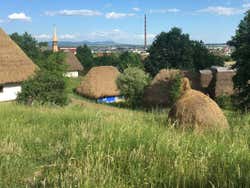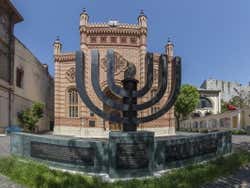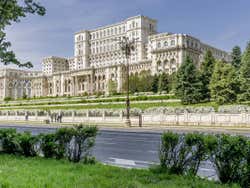
History of Bucharest
The exact origins of Bucharest are unknown, however some information indicates that it dates back to prehistoric times.
As with many other cities, there are legends surrounding the origins of Bucharest. One such legend claims that a young woman called Dambovita rejected the love of a prince to go and live with a shepherd called Bucur in a place called Bucaresti.
The current region of Wallachia, between the Carpathian foothills and the Danube River, where Bucharest is located, was inhabited by Getae tribes as early as 70 BC, however, no documentary evidence of the city can really be found until the 15th century.
Founding of Bucharest
The first mention of Bucharest is in a document dated 20th September 1459, signed by Vlad IV, who resided there and ordered for a fortress to be built as a defence against the Turks, as well as conserving a trade route between Brasov and Danubio.
That is why Vlad IV, or Vlad the Impaler, is known as the founder of Bucharest- although he's more commonly known as Dracula thanks to the novel by Irish author Bram Stoker.
For three centuries the Voivodes of Wallachia had their capital in Tirgoviste and their summer residence in Bucharest until in 1659 they decided to make the latter their capital.
Sought after by its powerful neighbours, Bucharest was invaded on many occasions, by the Turks, the Russians and the Austrians. These invasions continued until the end of the 15th century when it gained its independence.
Capital of the New Romania
In 1859, the principalities of Moldovia and Wallachia unified to create the Romanian United Principalities. It remained part of the Ottoman Empire, although from 1867 it had its own flag, anthem and currency and conducted its own foreign policy.
On 24th January 1862, Bucharest became the capital of the new Romania. Interestingly, the name Romania was chosen by a European commission after the 1856 Crimean War to honour the country's Latin origins. Romania gained its independence in 1881 after the Russo-Turkish War, and Prince Karl of Hohenzollern-Sigmaringen was named King Carol I.
King Carol I's rule lasted until 1914 and this period was unquestionably the most glorious period of Romanian history. The king's preference for French styles meant that tree-lined avenues and large neoclassical buildings started to be built and the city consequently started to be known as the "Little Paris" or the "Paris of the East".
A Difficult Past
From 1930, a constant process of urban destruction took place, which would continue into the 20th century.
In 1916 in the First World War, Bucharest fell into German hands and the capital became the city of Lasi, the third most important city in Romania, located in the region of Moldova.
In 1940, the city was occupied once again by the Wehrmacht and bombed by the allies. On 31st August 1944, Romania joined the allies and was then bombed by the Luftwaffe. At that point, the city was practically left in ruins.
In 1977, disaster struck once again, and Bucharest had an earthquake which caused more than 1,400 deaths and destroyed many buildings.
In 1980, the megalomaniac president Ceausescu proposed the idea of renovating the city. This involved demolishing a fifth of the city's buildings and replacing them with unaesthetic, Soviet-style buildings. This caused Bucharest to lose a large part of its monumental heritage.
In 1989, the Revolution brought the communist regime down, but marks can still be seen throughout the city.
After so much destruction Bucharest is still trying to recover the magic of its historical centre. This is a slow process but has been greatly helped by its joining the European Union in 2007.



